UK house prices increased by 12.4% in the year to April 2022, up from 9.7% in March 2022.
On a non-seasonally adjusted basis, average house prices in the UK increased by 1.1% between March and April 2022, up from a decrease of 1.3% during the same period a year earlier (March and April 2021).
House price growth was strongest in the South West where prices increased by 14.1% in the year to April 2022.
The lowest annual growth was in London, where prices increased by 7.9% in the year to April 2022.
The Royal Institution of Chartered Surveyors’ (RICS’) April 2022 UK Residential Market Survey reported that new buyer enquiries edged up slightly, with house price growth remaining firm across all parts of the UK.
The Bank of England’s Agents summary of business conditions 2022 Q2 reported a modest increase in the availability of properties for sale across the UK and house price inflation starting to moderate in some areas.
The UK Property Transactions Statistics showed that in April 2022, on a seasonally adjusted basis, the estimated number of transactions of residential properties with a value of £40,000 or greater was 106,780.
This is 12.1% lower than a year ago (April 2021). Between March and April 2022, UK transactions decreased by 3.9% on a seasonally adjusted basis.
The Bank of England’s Money and Credit April 2022 release reported that mortgage approvals for house purchases, an indicator of future borrowing, decreased slightly to 66,000 in April 2022, from 69,500 in March 2022.
This falls slightly below the pre-pandemic 12-month average up to February 2020 of 66,700.
England
In England, the April data shows on average, house prices have risen by 0.8% since March 2022. The annual price rise of 11.9% takes the average property value to £299,249.
The regional data for England indicates that:
- the South West experienced the greatest increase in its average property value over the last 12 months with a movement of 14.1%
- the East Midlands saw the most significant monthly price fall with a movement of -0.5%
- the North West experienced the greatest monthly growth with an increase of 2%
- London saw the lowest annual price growth with an increase of 7.9%
Price change by region for England
| Region | Average price April 2022 | Annual change % since April 2021 | Monthly change % since March 2022 |
|---|---|---|---|
| East Midlands | £237,904 | 12.4 | -0.5 |
| East of England | £344,943 | 11.9 | 0.4 |
| London | £529,829 | 7.9 | 1 |
| North East | £155,215 | 10.7 | 0.1 |
| North West | £208,867 | 13.3 | 2 |
| South East | £382,791 | 11.9 | -0.3 |
| South West | £318,610 | 14.1 | 1.9 |
| West Midlands | £242,145 | 11.8 | 0.5 |
| Yorkshire and the Humber | £201,806 | 12.1 | 1.6 |
Repossession sales by volume for England
The lowest number of repossession sales in February 2022 was in the East of England.
The highest number of repossession sales in February 2022 was in the North West.
| Repossession sales | February 2022 |
|---|---|
| East Midlands | 2 |
| East of England | 0 |
| London | 5 |
| North East | 9 |
| North West | 14 |
| South East | 7 |
| South West | 1 |
| West Midlands | 5 |
| Yorkshire and the Humber | 8 |
| England | 51 |
Average price by property type for England
| Property type | April 2022 | April 2021 | Difference % |
|---|---|---|---|
| Detached | £471,335 | £412,898 | 14.2 |
| Semi-detached | £286,099 | £252,705 | 13.2 |
| Terraced | £243,702 | £218,787 | 11.4 |
| Flat/maisonette | £247,652 | £231,535 | 7 |
| All | £299,249 | £267,500 | 11.9 |
Funding and buyer status for England
| Transaction type | Average price April 2022 | Annual price change % since April 2021 | Monthly price change since March 2022 |
|---|---|---|---|
| Cash | £279,934 | 11.6 | 0.9 |
| Mortgage | £308,839 | 12 | 0.7 |
| First-time buyer | £248,670 | 11.2 | 0.9 |
| Former owner occupier | £342,893 | 12.5 | 0.7 |
Building status for England
| *Building status | Average price April 2022 | Annual price change % since April 2021 | Monthly price change % since February 2022 |
|---|---|---|---|
| New build | £411,551 | 24.7 | 7.3 |
| Existing resold property | £287,900 | 9.4 | 1 |
*Figures for the 2 most recent months are not being published because there are not enough new build transactions to give a meaningful result.
London
London shows, on average, house prices have risen by 1% since March 2022.
An annual price rise of 7.9% takes the average property value to £529,829.
Average price by property type for London
| Property type | April 2022 | April 2021 | Difference % |
|---|---|---|---|
| Detached | £1,088,765 | £968,326 | 12.4 |
| Semi-detached | £682,453 | £617,624 | 10.5 |
| Terraced | £574,983 | £528,479 | 8.8 |
| Flat/maisonette | £443,216 | £417,905 | 6.1 |
| All | £529,829 | £491,221 | 7.9 |
Funding and buyer status for London
| Transaction type | Average price April 2022 | Annual price change % since April 2021 | Monthly price change since March 2022 |
|---|---|---|---|
| Cash | £552,525 | 8.9 | 2 |
| Mortgage | £522,806 | 7.6 | 0.8 |
| First-time buyer | £457.433 | 7.1 | 0.9 |
| Former owner occupier | £608,664 | 8.9 | 1.2 |
Building status for London
| *Building status | Average price April 2022 | Annual price change % since April 2021 | Monthly price change % since February 2022 |
|---|---|---|---|
| New build | £589,878 | 17.1 | 8.1 |
| Existing resold property | £522,538 | 6.6 | 1.4 |
*Figures for the 2 most recent months are not being published because there are not enough new build transactions to give a meaningful result.
Wales
Wales shows, on average, house prices have risen by 2.2% since March 2022.
An annual price rise of 16.2% takes the average property value to £211,990.
There were 4 repossession sales for Wales in February 2022.
Average price by property type for Wales
| Property type | April 2022 | April 2021 | Difference % |
|---|---|---|---|
| Detached | £326,907 | £276,995 | 18 |
| Semi-detached | £205,379 | £176,134 | 16.6 |
| Terraced | £164,838 | £142,411 | 15.7 |
| Flat/maisonette | £133,082 | £121,359 | 9.7 |
| All | £211,990 | £182,377 | 16.2 |
Funding and buyer status for Wales
| Transaction type | Average price April 2022 | Annual price change % since April 2021 | Monthly price change % since March 2022 |
|---|---|---|---|
| Cash | £205,194 | 16.2 | 2.4 |
| Mortgage | £215,967 | 16.3 | 2.2 |
| First-time buyer | £182,306 | 15.8 | 2.3 |
| Former owner occupier | £246,945 | 16.8 | 2.1 |
Building status for Wales
| *Building status | Average price April 2022 | Annual price change % since April 2021 | Monthly price change % since February 2022 |
|---|---|---|---|
| New build | £310,372 | 30.9 | 5.7 |
| Existing resold property | £200,287 | 13.7 | -0.4 |
*Figures for the 2 most recent months are not being published because there are not enough new build transactions to give a meaningful result.
Tom Bill, head of UK residential research at Knight Frank, said:
“Low supply put upwards pressure on house prices in April but listings have since begun to rise.
Interest rates are now above 1% and the Bank of England has used stark language to downplay the economic outlook, which has brought more sellers forward in the belief house prices are peaking.
Housing market statistics may not sit comfortably alongside other economic indicators but supply and demand are still rebalancing after the distortions caused by the pandemic and stamp duty holiday.
We expect price growth to return to single digits by the end of the year as supply builds and demand is put under pressure by rising mortgage rates and peaking inflation.”
Gareth Lewis, commercial director of property lender MT Finance, says:
“While house prices have gone up again, there are glimmers of a softening in the south east and east Midlands, even if only marginally.
One would expect this trend to be reflected more widely in subsequent surveys as the cost of everything goes up and buyers haggle more for a deal.
With some chains collapsing because of rising costs, it will be interesting to see what will happen in coming months as the squeeze on incomes continues.
While the lack of stock means the best houses are always going to sell, and sell well, the price rises we have seen are not sustainable.”
Jeremy Leaf, north London estate agent and a former RICS residential chairman, says:
“Price changes can reflect stock shortages as well as regional and house type variations, as reflected in this, the most comprehensive of all the market surveys.
But its inevitable historic nature means it is not yet showing the softening in demand picked up by other reports over the past few weeks.
We are seeing increasing nervousness about taking on debt at a time when buyers and sellers have no real clue as to when and how the rising cost of living will start to level out.
Nevertheless, continuing lack of choice and strong employment prospects means there is still little chance of significant price changes over the next few months at least.”
Anna Clare Harper, director of real estate technology platform IMMO, says:
“UK HPI data shows annual house price growth of 12.4 per cent, led by the South West, East Midlands and Yorkshire and the Humber.
The natural next question is: why are house prices still booming in the context of post-Covid, post-Brexit and mid-Ukraine turmoil? The problem is much the same as that affecting the wider economy – shortage of supply.
This is particularly acute for properties for sale and indeed for rent which are affordable, in places people want and need to live, and of good quality.
Suitable, affordable housing shortages are being made worse by planning backlogs from lockdown alongside labour and material shortages and inflationary pressures, alongside the fact that many new build schemes are unaffordable to local people.
The result is an ongoing and growing constraint on the affordability of home ownership.
In England, full-time employees could expect to spend 9.1 times their annual earnings on purchasing a home in 2021, and this figure is not improving with the latest HPI data highlighting that house price growth continues to outpace wage growth.”
Michael Bruce, CEO and Founder of Boomin, says:
“It’s important to remember that while sold prices provide the most concrete health check of the UK property market, they are reported on a lag.
So while the market remains apparently unphased by a spate of base rate jumps and consequential impact this is likely to have on the spending power of UK buyers, the reality is that this declining market sentiment is yet to bubble to the surface.
However, while these growing economic headwinds may rock the boat of house price growth, sustained and robust levels of buyer demand, coupled with a shortage of stock, are sure to prevent a significant drop.”
Managing Director of Barrows and Forrester, James Forrester, commented:
”We can expect to see UK property values continue to hold their own over the coming months, as the supply demand imbalance continues to negate any wider economic influence.
For every one buyer struggling with the financial task of climbing the ladder, there are three or four with a mortgage in principle and an existing property to act as financial collateral in order to fund their ongoing purchase.
It remains an incredibly competitive market and while we’re unlikely to see these extraordinary rates of house price growth persist in the long-term, bricks and mortar continues to provide a very sound investment.”
Director of Henry Dannell, Geoff Garrett, commented:
“Many prospective buyers are now finding that they simply aren’t eligible for the same level of mortgage financing that was available to them just a few short months ago, with many more struggling with affordability due to a squeeze on their disposable household income, coupled with increasing mortgage rates.
This has led to a small but gradual reduction in the number of buyers entering the market. Whilst this is yet to translate to a softening of prices, it is inevitable that property values will start to reduce as demand subsides.”
CEO of Octane Capital, Jonathan Samuels, commented:
“A reduction in the range and affordability of available mortgage products means that many homebuyers are now having to reevaluate their purchasing power in the current market.
While this won’t make them any less determined, it will impact the number of buyers entering the market and the price they are willing to pay, which in turn, will inevitably curb the buoyant rates of house price growth seen over the last two years.”
Director of Benham and Reeves, Marc von Grundherr, commented:
“The London property market looked set to perform very well in 2022, but this performance has been somewhat inconsistent of late.
This unpredictable performance has been no doubt influenced by the Ukraine conflict, with Russian demand for London’s most sought after properties remaining muted following a string of government sanctions.
However, with the financial pedigree of homebuyers in the capital amongst the strongest in the world, rising inflation and the increasing cost of buying are far less likely to act as a deterrent and we expect the London market to stand firm over the coming months, as dark clouds gather across the rest of the UK.”
Simon Gerrard, Managing Director of Martyn Gerrard Estate Agents and Abbeytown Ltd, commented:
“These figures, which represent the market between April 2021 and April 2022, don’t quite reflect what we’re seeing on the ground today – as we now face soaring inflation, a cost of living crisis and rising interest rates.
There are significant challenges facing the housing market as we move towards the Summer Slowdown.
Mortgage lending is already down and, with interest rates set to continue their upward trajectory, some buyers are finding themselves locked-out of the market amid higher repayments and tighter affordability rules.
However demand is still vastly outpacing supply of available homes and as long as this market imbalance continues, prices will remain high.
Make no mistake, alarm bells should be ringing within government over this housing supply crisis.
If the market is to become more accessible, the only viable solution is to relax planning laws to help stimulate supply across the country.”
Alex Lyle, director of Richmond estate agency Antony Roberts, says:
“Put an ambitious price on a property with a smart address and it will be met; do the same with a ‘B grade’ property and you won’t get the same result.
Large family houses in the £1.5m-plus bracket are still going to best-and-final offers but things that need work are more of a struggle as people are nervous about rising building costs.
Flats are also sticking, especially those with no outside space.
Areas such as Richmond are doing well for many reasons but good schooling is key – the cost of private education is now so high that many buyers are leaning towards state schools, with several outstanding examples in the borough.”
Mark Harris, chief executive of mortgage broker SPF Private Clients, says:
“With inflation soaring to a 40-year high of 9.1 per cent, cost of living increases and a string of rate rises from the Bank of England, there is growing concern around affordability and borrowing potential, as well as the potential knock-on effect to house prices.
Mortgage rates remain competitive although they are on the rise.
Borrowers need to move quickly to secure the best fixed rates as they are often pulled at short notice. With service levels varying considerably between lenders, it may take longer than borrowers anticipate, particularly if their case is complex.”



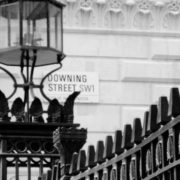
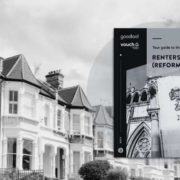


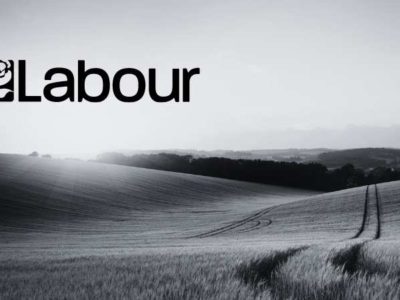
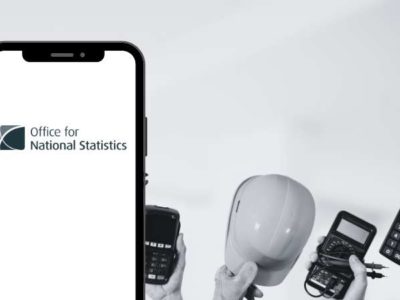
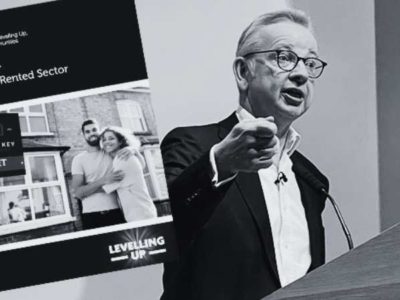


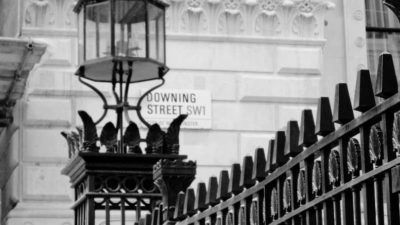
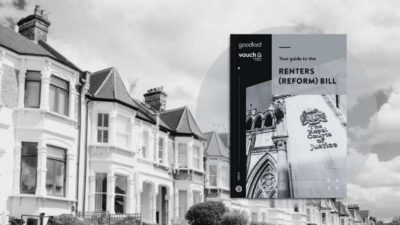







Comments